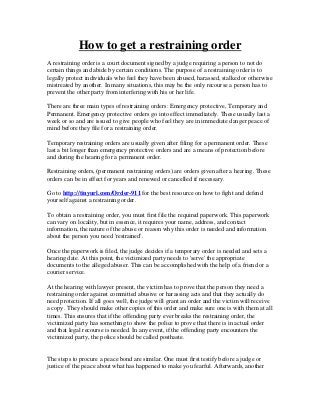Report
Share
Download to read offline

Recommended
More Related Content
Featured
Featured (20)
Product Design Trends in 2024 | Teenage Engineerings

Product Design Trends in 2024 | Teenage Engineerings
How Race, Age and Gender Shape Attitudes Towards Mental Health

How Race, Age and Gender Shape Attitudes Towards Mental Health
AI Trends in Creative Operations 2024 by Artwork Flow.pdf

AI Trends in Creative Operations 2024 by Artwork Flow.pdf
Content Methodology: A Best Practices Report (Webinar)

Content Methodology: A Best Practices Report (Webinar)
How to Prepare For a Successful Job Search for 2024

How to Prepare For a Successful Job Search for 2024
Social Media Marketing Trends 2024 // The Global Indie Insights

Social Media Marketing Trends 2024 // The Global Indie Insights
Trends In Paid Search: Navigating The Digital Landscape In 2024

Trends In Paid Search: Navigating The Digital Landscape In 2024
5 Public speaking tips from TED - Visualized summary

5 Public speaking tips from TED - Visualized summary
Google's Just Not That Into You: Understanding Core Updates & Search Intent

Google's Just Not That Into You: Understanding Core Updates & Search Intent
The six step guide to practical project management

The six step guide to practical project management
Beginners Guide to TikTok for Search - Rachel Pearson - We are Tilt __ Bright...

Beginners Guide to TikTok for Search - Rachel Pearson - We are Tilt __ Bright...
How to get a restraining order
- 1. How to get a restraining order A restraining order is a court document signed by a judge requiring a person to not do certain things and abide by certain conditions. The purpose of a restraining order is to legally protect individuals who feel they have been abused, harassed, stalked or otherwise mistreated by another. In many situations, this may be the only recourse a person has to prevent the other party from interfering with his or her life. There are three main types of restraining orders: Emergency protective, Temporary and Permanent. Emergency protective orders go into effect immediately. These usually last a week or so and are issued to give people who feel they are in immediate danger peace of mind before they file for a restraining order. Temporary restraining orders are usually given after filing for a permanent order. These last a bit longer than emergency protective orders and are a means of protection before and during the hearing for a permanent order. Restraining orders, (permanent restraining orders) are orders given after a hearing. These orders can be in effect for years and renewed or cancelled if necessary. Go to http://tinyurl.com/Order-911 for the best resource on how to fight and defend yourself against a restraining order. To obtain a restraining order, you must first file the required paperwork. This paperwork can vary on locality, but in essence, it requires your name, address, and contact information, the nature of the abuse or reason why this order is needed and information about the person you need 'restrained'. Once the paperwork is filed, the judge decides if a temporary order is needed and sets a hearing date. At this point, the victimized party needs to 'serve' the appropriate documents to the alleged abuser. This can be accomplished with the help of a friend or a courier service. At the hearing with lawyer present, the victim has to prove that the person they need a restraining order against committed abusive or harassing acts and that they actually do need protection. If all goes well, the judge will grant an order and the victim will receive a copy. They should make other copies of this order and make sure one is with them at all times. This ensures that if the offending party ever breaks the restraining order, the victimized party has something to show the police to prove that there is in actual order and that legal recourse is needed. In any event, if the offending party encounters the victimized party, the police should be called posthaste. The steps to procure a peace bond are similar. One must first testify before a judge or justice of the peace about what has happened to make you fearful. Afterwards, another
- 2. hearing will be scheduled where the alleged abuser attends. At this second hearing, you and the other party are both given a chance to state your case as to why or why not a peace bond is needed. Bonds tend to be granted by default if the defendant fails to attend. Otherwise, the judge will decide whether a peace bond is necessary. The main difference between restraining orders and peace bonds is the length of time they last. Peace bonds are good up to a year whereas restraining orders are more open- ended. After a year, if the bond is still needed, the Applicant must file an application for a new peace bond. Go to http://tinyurl.com/Order-911 for the best resource on how to fight and defend yourself against a restraining order.